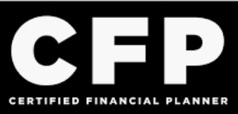
Answers By Joanna: How do I proactively manage the tax rate on my portfolio?
Q: How do I proactively manage the tax rate on my portfolio?
A: There are several tools you can use to manage the taxes in your investment portfolio. Unlike IRAs, Roth IRAs and employer sponsored retirement accounts, taxable accounts give you the flexibility to use your money whenever you want or need it and to contribute unlimited amounts. However, that freedom and flexibility come with the cost of paying taxes on the capital gains, dividends and interest that may be generated during the tax year. Here are four tips to manage the taxes in your taxable investment account.
1. Pay Attention to the Structure
Mutual funds have an open architecture where all of the shareholders own units of the mutual fund. Funds are pooled so investors can benefit from the professional management of the mutual fund manager and achieve diversification quickly. Mutual funds also typically require smaller investment amounts than would be needed to diversify a portfolio of individual stocks and bonds.
However, this structure has drawbacks when it comes to tax consequences. Because all the mutual fund shareholders are pooled together, when the manager sells investments inside the mutual fund for a gain, those gains are distributed to the shareholders. This often happens when other shareholders want to cash in their investments and redeem their mutual fund shares for cash. At the end of the year, mutual funds will send out a 1099 reporting the gains to all the shareholders. Even if you did not redeem any of your shares, you can still get a tax bill because of the activity within the fund that you cannot control. If you plan to use mutual funds, consider looking for a fund with low turnover. Actively traded mutual funds are more likely to generate greater capital gains distributions than passively managed funds because of the lower turnover ratio. Also, think about when to purchase new shares. If you purchase toward the end of the year, you could get a bill for gains that occurred earlier in the year before you owned those shares.
Another approach is to change the structure and use Exchange Traded Funds (ETFs). An ETF is similar to a mutual fund in that it invests in many different stocks and bonds. However, ETFs have a different structure which makes them more tax efficient than their mutual fund counterparts. This structure shields your portfolio from the activity of other investors’ redemptions. Just because your neighbor sells their shares for a gain, you will not see a gain from your investment until you sell your shares. ETFs do occasionally generate capital gains, for example if there are large changes to the underlying index. Further, most ETFs are passively managed which reduces costs and active manager error. Even with the more tax efficient structure of an ETF, you will still pay taxes on dividends and interest received as well as any gains you recognize during the year by selling ETF shares for a profit. One way to manage the gains you recognize is through using a buy and hold strategy in your portfolio.
2. Location! Location! Location!
Just like real estate, location matters for your investment portfolio. If you have both tax deferred and taxable investment accounts, you can take advantage of the tax deferred accounts to hold the investments that generate higher tax consequences. For example, interest income is generally taxed at ordinary income tax rates while qualified dividends and capital gains are taxed at lower rates. Therefore, you could place more of your bond holdings in your tax deferred accounts to shield those interest payments from current income taxes. Conversely, you could place your equity holdings in your taxable accounts to benefit from the lower tax rates on the qualified dividends and capital gains those investments typically generate. You might also consider placing smaller company stocks in your taxable accounts since they are less likely to pay out dividends and the majority of return is from capital gains. Be sure you understand the nuances of the tax consequences of your investments. For example, many commodities like gold and silver are considered collectibles and are taxes at higher rates.
Be sure you understand the nuances of the tax consequences of your investments.
3. Choose Tax Efficient Investments
Besides using ETFs as previously discussed, consider using municipal bonds if you are in a higher tax bracket. Municipal bonds, or munis, are issued by governmental entities such as states, cities and counties. They often are used to upgrade or build infrastructure. The bonds pay interest that is generally exempt from federal income taxation and may also be exempt from state and local taxes if you purchase bonds issued by the government where you reside. However, because of these tax advantages, munis often offer lower interest payments than their taxable counterparts. Before you invest in municipal bonds be sure you understand the tax-equivalent yield of those bonds compared to a taxable bond. If you are in a lower tax bracket, a taxable bond may give you a better result.
4. Take Advantage of Tax Loss Harvesting
Tax loss harvesting is selling investments at a loss. Those losses can be used to offset other gains. Currently, up to $3,000 of investment losses can be used to offset ordinary income and any unused amount can be carried forward to be used in future years. While it may sound counterintuitive to sell investments at a loss, you can take advantage of this strategy without abandoning good investments. This can be used effectively during market downturns.
The IRS has a wash sale rule that you must consider. The wash sale rule does not allow you to sell an investment today for a loss and buy the same investment back tomorrow and still claim the loss. This applies to “substantially identical” securities. To claim losses and avoid the wash sale rule, you cannot repurchase that same investment within 30 days. For example, if you are invested in ETFs or mutual funds, you could sell your shares of the XYZ fund and then immediately purchase shares of the ABC fund. This will generally not violate the “substantially identical” securities limitation of the wash sale rule, you can stay invested in the market, and you can potentially recognize any losses from your sale of the XYZ fund. Be sure to consult with a tax advisor or other qualified professional.


